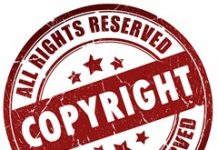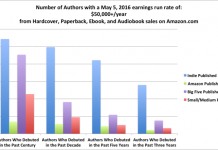 For those of you who missed it last week, a traditionally published author posted her HarperCollins earnings, was asked to take the blog post down, author Lexi Revellian blogged about it, and the whole thing turned into a free-for-all on Passive Guy.
For those of you who missed it last week, a traditionally published author posted her HarperCollins earnings, was asked to take the blog post down, author Lexi Revellian blogged about it, and the whole thing turned into a free-for-all on Passive Guy.
I missed much of the commentary on Passive Guy, but it was interesting even up to the point when I decided I had real work to do that day.
Then I discovered that Steve Zacharius, CEO and President of Kensington, decided to comment on the post on Passive Guy, and he asked several questions of indie authors. Joe Konrath decided to answer them (in typical Konrath fashion), and then Zacharius answered (some) of Konrath’s questions.
Just go read Konrath’s post about it, but be warned. It’s long!
Anyway, Konrath raised a few points I wanted to discuss here.
Zacharius said, “But my point was for every one of you [Konraths], there are probably ten thousand that have sold only 100 copies.”
Joe agreed and pointed out that for every successful traditionally published author there are ten thousand unpublished, aspiring authors. Also true, and hold that point for a moment.
Zacharius also said, “Did you see the recent posts from Writer’s Digest that 80% of self-published authors make less than $1000. That’s from a survey of 9500 writers.”
Hmm, guess that means I’m in the top 20% of self-published authors. Yeah me!
Anyway, here was Joe’s response, which, added to the first point, was what I really wanted to cover. “Finally, I don’t understand the phrase “make less than $1000″. Is this annual? Because ebooks are forever, and should theoretically earn forever, so there won’t be a cap on how much a book earns.”
Go, Joe! Exactly the right way to look at it. One of the biggest distinctions between self-published and traditionally published is the long tail. In fact, it was after reading [easyazon-link asin=”1401309666″ locale=”us”]The Long Tail[/easyazon-link] several years ago that I decided to explore self-publishing. Sometimes it can take years for an author’s works to find an audience. With self-publishing, books have that time. Once the fixed costs of editing, cover design, etc. are covered, there’s no cost to keeping the book on Amazon or wherever.
Because of the traditional model of books needing to sell as fast as possible, that’s not as true, which, I think, leads to statements such as the ones made by Zacharius. Book hasn’t sold well after 2 months (or years). Must be a dud. Well, maybe. But maybe not.
One last point that Konrath made amused me highly. “… take zero advantage of a backlist that could be making you tens of millions of dollars if you only paid a little bit of attention to authors like me and what we’re doing.”
Hmm. Sounds exactly like the point I made in the comments to my recent article on subscription services. Author backlists are a huge marketing opportunity that the legacy publishers aren’t yet using properly. And that self- and hybrid authors are learning to use to their advantage.
I really wish I had a time machine right about now. I’d love to jump just 5 years into the future to see what’s going to happen.
Edit: I just read a fantastic open letter to Zacharius from a Kensington author. Very interesting reading. I am wondering if this is going to turn into a wave of traditionally published authors speaking out about their experiences.

































